 In Roosevelt’s Forest Army, Perry Merrill notes that an average of 21 CCC camps operated in the state of Florida with an average distribution among the technical services as follows: 7 National Forest camps, 9 Private Forest camps, 1 Animal Industry camp, 1 Biological Survey camp and 5 State Park camps. Merrill also notes that just under 50,000 Florida men were given employment by the CCC including 45,887 junior and veteran enrollees, 101 Indians and 3,026 so-called non-enrolled personnel which included camp officers and supervisors.
In Roosevelt’s Forest Army, Perry Merrill notes that an average of 21 CCC camps operated in the state of Florida with an average distribution among the technical services as follows: 7 National Forest camps, 9 Private Forest camps, 1 Animal Industry camp, 1 Biological Survey camp and 5 State Park camps. Merrill also notes that just under 50,000 Florida men were given employment by the CCC including 45,887 junior and veteran enrollees, 101 Indians and 3,026 so-called non-enrolled personnel which included camp officers and supervisors.We can compare Merrill’s overall average to numbers cited in a couple of Annual Reports to get an idea of how the camp distributions ebbed and flowed between 1933 and 1942. For example, the Annual Report of the Director of Emergency Conservation Work for fiscal year 1937 lists a total of 23 CCC camps in the state of Florida, broken out as follows:
National Forest: 7
Private Forest: 9
Animal Industry: 1
Biological Survey: 1
State Park: 5
So during fiscal year 1937 the number of CCC camps in Florida was slightly above the overall average of 21 cited in Merrill’s Roosevelt’s Forest Army.
Compare this to the distribution of 16 total Florida CCC camps as reported in the 1939 Annual Report of the Director of the Civilian Conservation Corps:
State Park: 7
National Forest: 4
Private Forest: 4
Biological Survey: 1
So for FY 1939 Florida was below the average as reported in Merrill’s overall camp total. You’ll also note that the “animal industry” camp was disbanded some time in the intervening years and that work on private forest projects decreased. (It’s also interesting to see that the title of the Annual Report was changed to reflect the program’s name change from Emergency Conservation Work to Civilian Conservation Corps.)
 So what exactly was the work of the CCC enrollees at Florida’s seemingly short lived animal industry camp? The Federal Security Agency’s Annual Report of the Director of the Civilian Conservation Corps for 1942 offers some insight into this type of CCC camp. According to the report, CCC camps were established at Bureau of Animal Industry sites located in Auburn, Alabama, Dubois, Idaho, Jeanerette, Louisiana, Beltsville, Maryland, Miles City, Montana and in Brooksville, Florida. The report describes the work of these camps in some detail:
So what exactly was the work of the CCC enrollees at Florida’s seemingly short lived animal industry camp? The Federal Security Agency’s Annual Report of the Director of the Civilian Conservation Corps for 1942 offers some insight into this type of CCC camp. According to the report, CCC camps were established at Bureau of Animal Industry sites located in Auburn, Alabama, Dubois, Idaho, Jeanerette, Louisiana, Beltsville, Maryland, Miles City, Montana and in Brooksville, Florida. The report describes the work of these camps in some detail:These stations are research stations devoted to finding better practices in breeding, feeding, and management of domestic farm animals or poultry, and in disease prevention and control. All but one of these stations are located on tracts of land given to this bureau for experimental use. In all cases the land, buildings, and other facilities had to be adapted or newly planned for the best advantage of the research work. This is a costly process in cases of major field stations, and the temptation always has been to begin the livestock research work to which the station was dedicated before adequate or ideal plant facilities became available…The CCC camps happened to come when the unusual assistance which they could give was sorely needed at several stations…In short, through the unusual and able assistance of CCC camps at several of the major field stations, the Bureau of Animal Industry now has field stations better equipped for the research at hand, and therefore better able to give a good account of the money appropriated to it for livestock research work.
In the case of the Brooksville, Florida research station, the land for the facility was donated in 1932, prior to the establishment of the CCC, and according to a U.S. Department of Agriculture news story, the facility now covers about 3,000 acres and employs 20 full time state and federal employees. Given this explanation, it seems likely that CCC enrollees helped with setting up the facilities at the experimental station and once the site was up and running, Florida’s animal industry camp was no longer necessary; consequently we see the animal industry camp listed in the 1937 Annual Report but missing from the 1939 report.
Using the fiscal year 1939 Annual Report for monthly enrollment, the figures break out like this:
July 1938: 4,986
August 1938: 4,845
September 1938: 4,057
October 1938: 4,789
November 1938: 4,599
December 1938: 4,149
January 1939: 4,660
February 1939: 4,487
March 1939: 3,029
April 1939: 4,548
May 1939: 4,377
June 1939: 3,922
These are the monthly totals for enrollment in the state of Florida – not the total number of CCC workers working in the state each month.

The same Annual Report (FY1939) lists individual totals for work accomplished and in that listing we find that between July 1938 and June 1939, CCC enrollees in Florida installed over 222,000 square yards of stream and lake bank protection on one hand but only built six camp stoves or fireplaces. Other work completed within this wide range of accomplishments included:
Open ditches: 10,100 linear feet
Fighting forest fires: 6,754 man days
Educational, guide or contact station work: 2,312 man days
Excavation of earthen channels, canals and ditches: 62,618 cubic yards
Beach improvement: 6 miles
The Florida Park Service Alumni Association has a nice page dedicated to documenting CCC park staff. It’s a work in progress but clearly their dedication to the project shines through.
The Friends of Florida State Parks has a wonderful page devoted to the CCC on their website. Here, among other things, you’ll learn that the first CCC camp in Florida’s state park system was established at Highlands Hammock State Park in 1934.
Many folks, including me for a time, labor under the misconception that the World War I veterans killed in the 1935 hurricane were CCC enrollees when in fact they were assigned to several Federal Emergency Relief Administration (FERA) camps in the Keys. (For an example, click here. I’m sure the author’s intentions are good in this case, but the article erroneously states that those killed in the Florida hurricane were CCC enrollees and that Robert Fechner was head of the CCC over the course of its entire lifespan, neither of which was the case.) Certainly the fact that the World War I veterans were FERA workers and not CCC enrollees doesn’t diminish the tragedy in any way and indeed there is a connection in that CCC enrollees helped with clean up and recovery of bodies in the days and weeks following the horrific tragedy. If anything, this long-standing misconception is simply a good illustration of how so many of the New Deal programs have gotten lumped together over time and it may support the claims of some who say the CCC garners some praise that should rightly go to agencies like FERA and the WPA. For a great, accurate account of the Bonus Army and the veteran’s FERA camps that grew out of that episode, read The Bonus Army: An American Epic by Dickson and Allen.
I’ll close out this account of CCC work in Florida with a mention of some CCC enrollees who did die while working in Florida. The December 3, 1933 issue of the CCC newspaper Happy Days reported that enrollee Michael G. Kovich of Company 295, Sumatra, Florida was shot in a nearby town. Kovich’s death is among the first 20 deaths reported in Happy Days during the lifespan of the CCC.
On May 19, 1934, Happy Days reported the suicide of an enrollee by the last name of Fraser at the District G Headquarters in Barrancas, Florida.
September 15, 1934 issue of Happy Days reported on the drowning death of Albert Oliva of Company 262 at Sebring, Florida.
Finally, jumping ahead in time, the January 13, 1940 issue of Happy Days reported on the death of James Devoe from Company 4453 at Deleon Springs, Florida. Enrollee Devoe was killed in an auto accident while on leave.
When we think back on the CCC and consider it’s broad scope and far reaching impact and the numbers of men associated with its work, it’s a small wonder than more enrollees weren’t killed in those years between 1933 and 1942.
Open ditches: 10,100 linear feet
Fighting forest fires: 6,754 man days
Educational, guide or contact station work: 2,312 man days
Excavation of earthen channels, canals and ditches: 62,618 cubic yards
Beach improvement: 6 miles
The Florida Park Service Alumni Association has a nice page dedicated to documenting CCC park staff. It’s a work in progress but clearly their dedication to the project shines through.
The Friends of Florida State Parks has a wonderful page devoted to the CCC on their website. Here, among other things, you’ll learn that the first CCC camp in Florida’s state park system was established at Highlands Hammock State Park in 1934.
Many folks, including me for a time, labor under the misconception that the World War I veterans killed in the 1935 hurricane were CCC enrollees when in fact they were assigned to several Federal Emergency Relief Administration (FERA) camps in the Keys. (For an example, click here. I’m sure the author’s intentions are good in this case, but the article erroneously states that those killed in the Florida hurricane were CCC enrollees and that Robert Fechner was head of the CCC over the course of its entire lifespan, neither of which was the case.) Certainly the fact that the World War I veterans were FERA workers and not CCC enrollees doesn’t diminish the tragedy in any way and indeed there is a connection in that CCC enrollees helped with clean up and recovery of bodies in the days and weeks following the horrific tragedy. If anything, this long-standing misconception is simply a good illustration of how so many of the New Deal programs have gotten lumped together over time and it may support the claims of some who say the CCC garners some praise that should rightly go to agencies like FERA and the WPA. For a great, accurate account of the Bonus Army and the veteran’s FERA camps that grew out of that episode, read The Bonus Army: An American Epic by Dickson and Allen.
I’ll close out this account of CCC work in Florida with a mention of some CCC enrollees who did die while working in Florida. The December 3, 1933 issue of the CCC newspaper Happy Days reported that enrollee Michael G. Kovich of Company 295, Sumatra, Florida was shot in a nearby town. Kovich’s death is among the first 20 deaths reported in Happy Days during the lifespan of the CCC.
On May 19, 1934, Happy Days reported the suicide of an enrollee by the last name of Fraser at the District G Headquarters in Barrancas, Florida.
September 15, 1934 issue of Happy Days reported on the drowning death of Albert Oliva of Company 262 at Sebring, Florida.
Finally, jumping ahead in time, the January 13, 1940 issue of Happy Days reported on the death of James Devoe from Company 4453 at Deleon Springs, Florida. Enrollee Devoe was killed in an auto accident while on leave.
When we think back on the CCC and consider it’s broad scope and far reaching impact and the numbers of men associated with its work, it’s a small wonder than more enrollees weren’t killed in those years between 1933 and 1942.
Sources: As with all the posts in the State-By-State series the map is from Stan Cohen's book The Tree Army. The campstove plan is from a 1930s book on construction of camp stoves. I'm also indebted to Bob Audretsch for his indexing of the Happy Days newspaper.

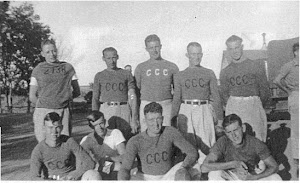

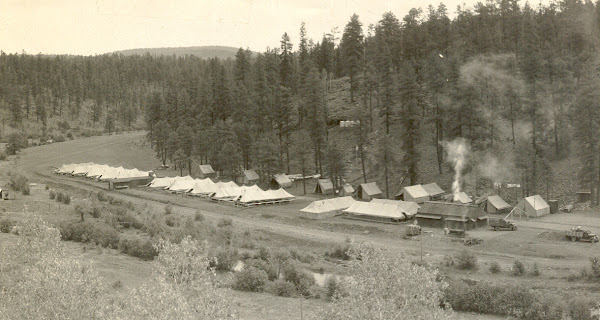

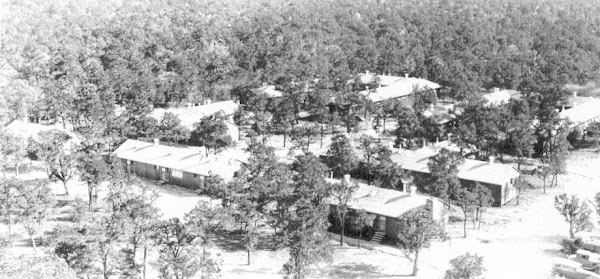



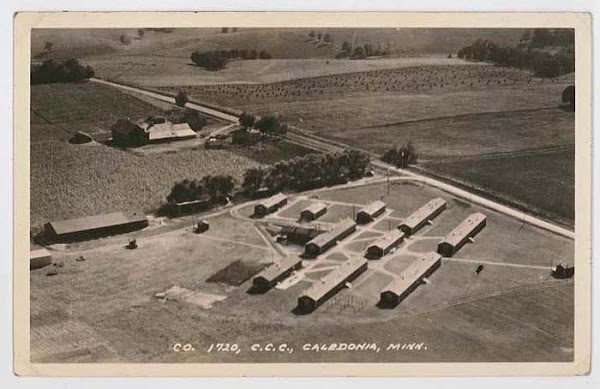
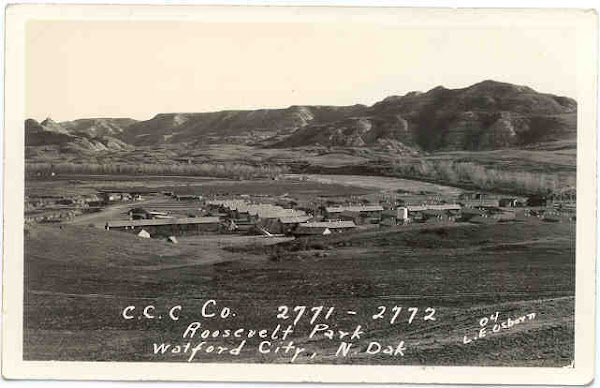
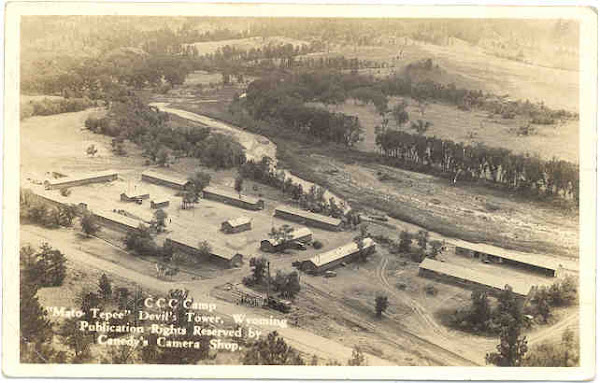
2 comments:
Good Morning, my sister and I were trying to establish when our father, Carmel W. Pelt, was enrolled in the Civilian Conservation Corp. He was born and raised in Crawfordville, Florida and would be 95 if still living. I do not think he left North Florida until he was drafted in WWII. My sister thinks he was sent to North Carolina to work. Any idea how we can find some information on this. Thank you
Hi Brenda,
That's a tall order. You might try searching the local newspapers in Crawfordville for the period when your father might have enrolled. Papers in the 1930s - especially small town papers - published all sorts of things that wouldn't make the news today but were of huge importance to locals in those days. If Crawfordville was small enough, there might be a piece in the paper about his enrolling in the CCC or his return home from the CCC. Another option would be to submit a "looking for" request to the CCC Legacy Journal for publication - perhaps a CCC Legacy member will remember working with your dad. I thank you for stopping by and I wish I had more information to share.
Post a Comment